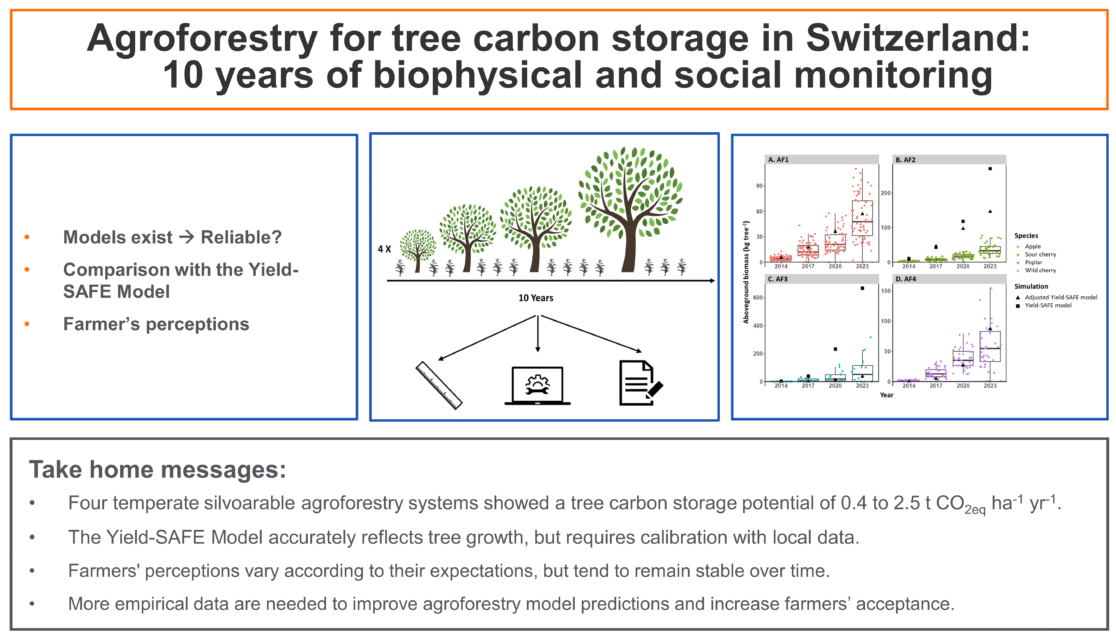Swiss Agroforestry Systems Meet Farming Sector Expectations and Support Climate Mitigation
Photo Gabriela Brändle,
Agroscope
Scientists measured tree growth in four agroforestry systems over a ten-year period and calculated carbon storage from their findings. This data helps us to better understand, plan and implement agroforestry systems, and to assess their climate-change mitigation impact.
Agroforestry – the combination of trees with arable farming and/or livestock husbandry – offers significant climate-change mitigation potential. To date, however, not much data has been available on the actual performance of such systems in our temperate climate zones and on long-term acceptance among farmers in Switzerland.
Apple, sour cherry, poplar and wild cherry
To remedy this information deficit, four agroforestry systems were monitored over a ten-year period, with researchers measuring tree growth and using these findings to calculate carbon storage. In addition, participating farmers were regularly asked to rate the performance of their systems.
Wide variation in tree growth depending on species and location
Differences in growth between the smallest and largest trees ranged between 44% and 97%. Accordingly, CO₂ storage potential also varied between 0.4 and 2.5 tonnes of CO₂ equivalent per hectare and year. The reasons for this were the variation in growth rates of the different tree species and the relative suitability of the locations. These differences in growth were directly and accurately reflected in the YieldSAFE agroforestry model calculations for apples and wild cherries. After calibrating the model to the respective local conditions the results were also accurate for poplar and sour cherry trees. The model can thus be used for the efficient planning and impact assessment of agroforestry systems.
Tree mortality should not be underestimated
At the outset, a mortality rate of up to 20% was recorded. Replacement plantings successfully maintained the overall growth performance of the system. However, in addition to planting and design issues, it was also important to learn about the farmers’ attitudes towards their work in the agroforestry systems.
Realistic expectations help avoid disappointment
Farmers’ opinions on the performance of agroforestry systems depended strongly on their motivation and changed little over the years. Farms which e.g. planted agroforestry systems to protect against erosion recorded positive effects in terms of soil protection, while farms focusing more on biodiversity recorded their greatest successes in this sphere. This suggests that their expectations were realistic. The study highlights the importance of long-term data for customising the model, and shows how realistic models and clear communication help avoid disappointment and promote the implementation of agroforestry systems over the long term.

Conclusions
- Tree growth and CO₂ storage potential varied between the four agroforestry systems investigated, ranging between 0.4 and 2.5 tonnes of CO₂ equivalent per hectare and year.
- Models that take tree species and location into account can assist with the planning and implementation of agroforestry systems.
- The four farms studied implemented a variety of systems to achieve their respective goals. Their planning was realistic and they have largely been satisfied with the achievement of their aims to date.
Bibliographical reference
Temperate agroforestry for tree carbon storage in Switzerland: 10 years of biophysical and social monitoring.



